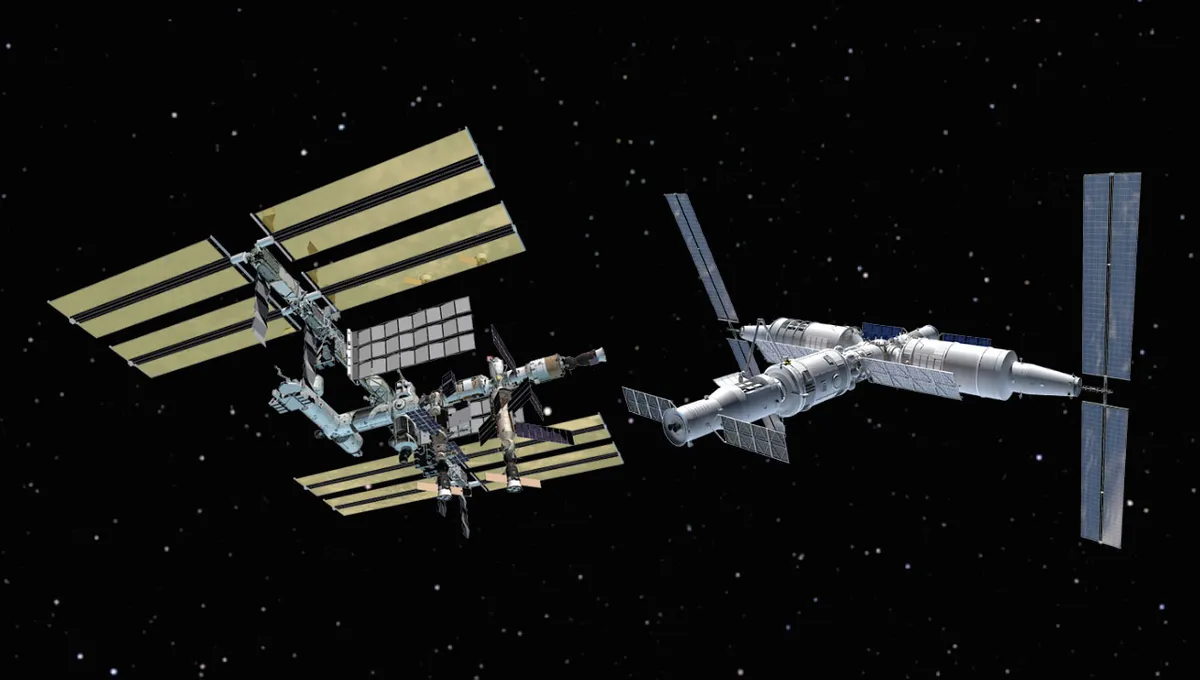The China National Space Agency (CNSA) has become a major space player over the last decade, impressing space fans worldwide in 2021 with the Zhurong rover's first images of Mars.
Now the nation hopes to take its next leap towards the heavens and complete its first long-term space station, Tiangong, which translates as ‘heavenly place’.
A crew of three ‘taikonauts’ are already on board the Tianhe core module, which launched in 2021.
They are overseeing the installation of the final two science modules, the first of which, Wentian, launched on 24 July 2022.
The goal of the station is to give CNSA the know-how to send crews to live in space, and Tiangong is a key component of China’s ambitions to send humans to the Moon and on to Mars.

China has constructed its own station as US law prohibits NASA from working with China, effectively barring them from the International Space Station.
However, the nation is keen to collaborate with other international partners and has already run joint training exercises with ESA.
Indeed, China’s aim is that Tiangong will act as a new hub of international cooperation in space once the ISS is decommissioned in 2031.
Below is a guide to the Tiangong space station's various components, and how they operate.
Tiangong space station's structure and components

Shenzhou – ‘Divine vessel’
The Shenzhou transport vehicle is the main vehicle used by China for its human spaceflight programme. It borrows heavily from the Russian Soyuz capsule, though is slightly larger and can carry up to three passengers at a time.
Wentian – ‘Heavenly quest’
Launched 24 July 2022
A laboratory module where scientific experiments, both from China and international partners, can be conducted. It will contain an airlock to allow taikonauts outside to conduct spacewalks. The hull has several stations where external experiments can be set up. The module also contains back-up avionics and propulsion.
Mengtian – ‘Heavenly dream’
Launched October 2022
Mengtian will form the final instalment of the space station. As well as its interior serving as a laboratory, ithas a cargo airlock where replacement parts or externalexperiments can be delivered outside the station. From here taikonauts and robotic arms can place them on the station’s hull.
Tianhe – ‘Harmony of the heavens’
Launched29 April 2021
The core module and central node of Tiangong, this provides the essential functions of the space station – life support, navigation, propulsion – as well asthe living quarters for up to three crew members.
Tianzhou – ‘Heavenly ship’
An automated freight vehicle which can transport large payloads up to a mass of 6,500kg to the station. Like almost allthe components of the station, they are launched on Long March 7 rockets.
Solar panels
The station is powered by solar arrays. The solar panels on Wentian and Mengtian are about 30m long and will provide most of the station’s power. A set of smaller arrays on Tianhe measures 18m long.
How Tiangong compares to the International Space Station

International Space Station
- Living space: 916m3
- Length: 108m
- Normal occupancy: 6
- Orbit height: 408km
Tiangong
- Living space: 110m3
- Length: 20m
- Normal occupancy: 3
- Orbit height: 389km
This guide originally appeared in the August 2022 issue of BBC Sky at Night Magazine.
